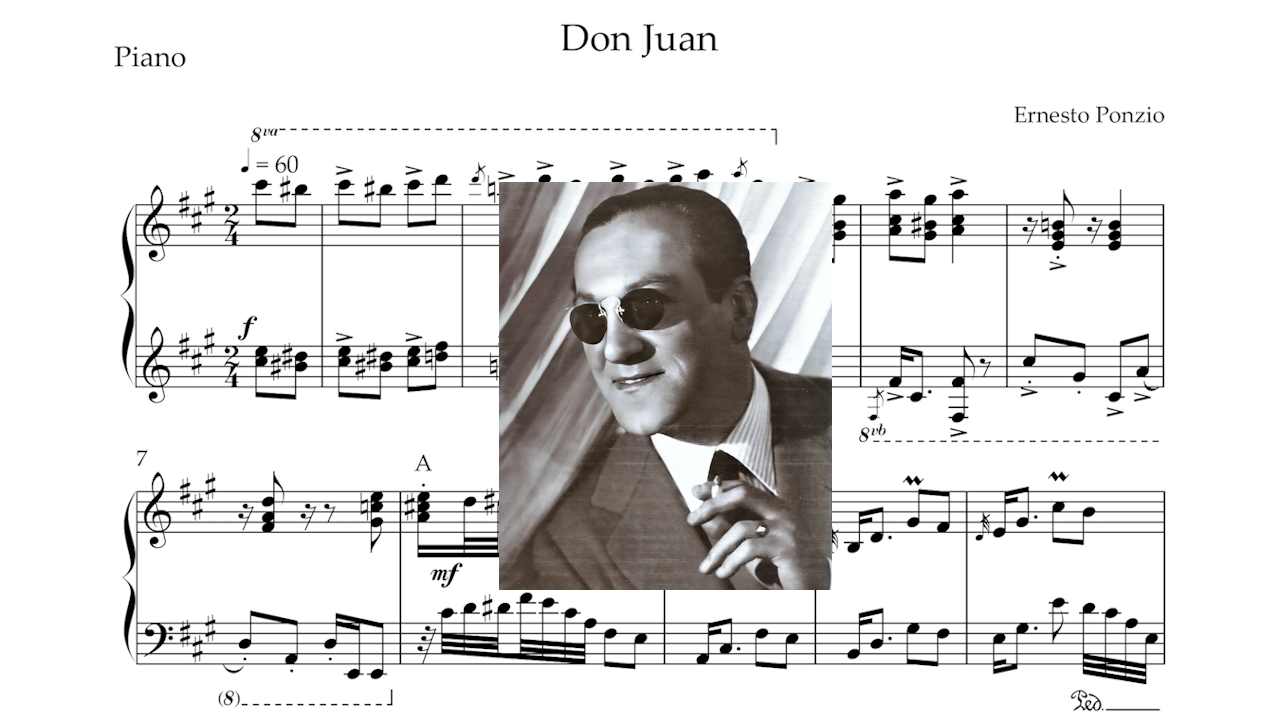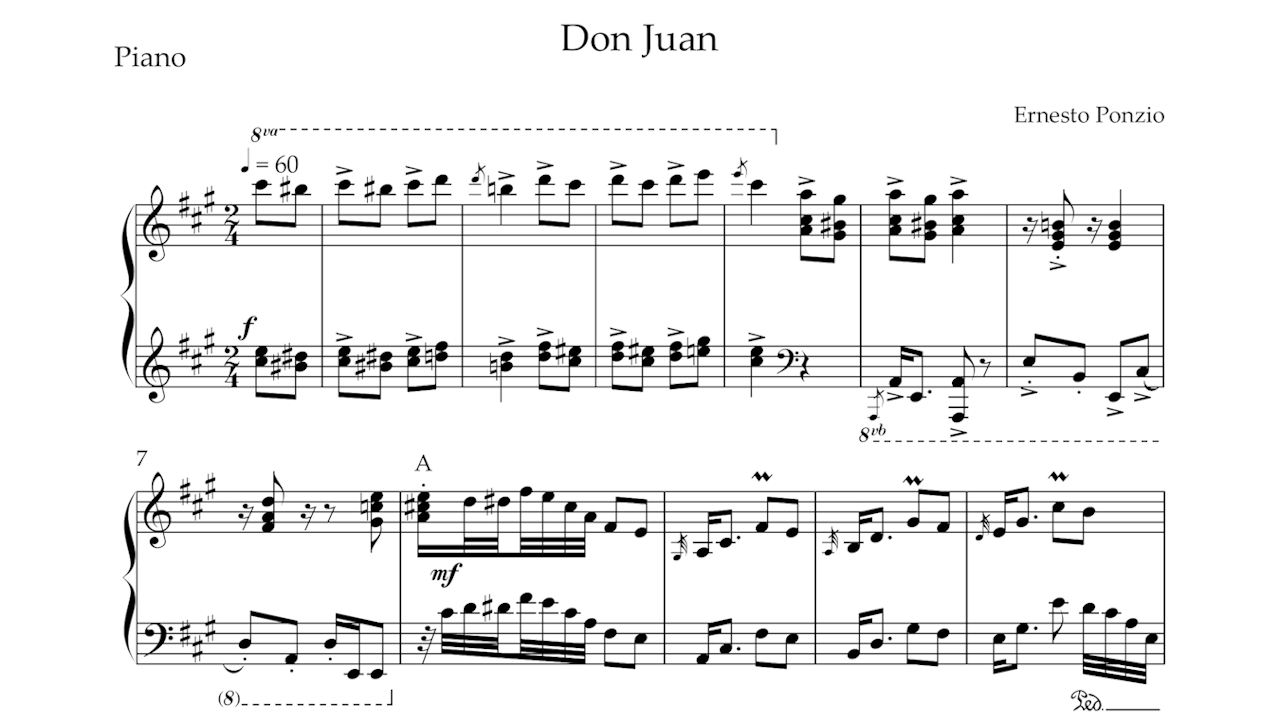
“El ciego se llevó el secreto a la tumba” – The blind man took the secret to his grave.
This is what Aníbal Troilo said upon hearing of the death of Carlos Di Sarli, one of the greatest tango pianists of all time. Di Sarli’s sonorous piano playing was wrapped in mystery because he never revealed anything about his technique, and we are still guessing how he created all those effects that his piano texture is famous for. Especially the strong bass notes he played with his left hand are a constant object of admiration – they might boom like thunder or support a bright chord in secret. In the following example, Esta noche de luna by José García and Graciano Gómez, he uses both hands to play explosive, steely chords that astonishingly suit the ecstatic melody
https://youtu.be/JoXYxcFb-Xs?si=xylWRnZCMtMkUGil&t=32
Di Sarli’s secret lies in a clever use of overtone resonances between the strings of the piano, aided by the sustain pedal, short octave doublings, and a subtle use of dissonant intervals. However, this is a topic we don’t immerse ourselves in at this time. Instead, I have chosen a performance in which Di Sarli’s piano takes on a more prominent role than usual. It does not just support and comment on the violins and bandoneons, but steps forward in several solos before retreating to the background – very much the way the piano does in a classical piano concerto.
Don Juan
Composed by Ernesto Saborido and recorded by Vicente Greco in 1910, Don Juan, aka El taita del barrio, is one of the first tangos on a gramophone record. Carlos Di Sarli gave new life to a number of guardia vieja tangos, and, typical of him, Don Juan was featured three times on his recording schedule in 1941, 1951, and 1955. Personally, I find the second version published by Music Hall to be the most brilliant. The recording date was December 5, 1951.
I won’t analyze the arrangement or the performance much further, but let you, my dear reader, do it yourself. I have transcribed the piano part of Di Sarli’s performance, and you can watch the transcription in a video with the sound of the 1951 recording. The moving green line indicates the bar that sounds, but it is not accurate within the bar.
There are a few subtle nuances I have left out for clarity, e.g. weak acciaccaturas in bars 25 to 27 and 58 to 63. You can add them if you play this with your own orchestra. 😊
I hope this transcription will help you see the diversity of textures in Di Sali’s piano playing, even in such a short tango piece!
View the video at YouTube!
